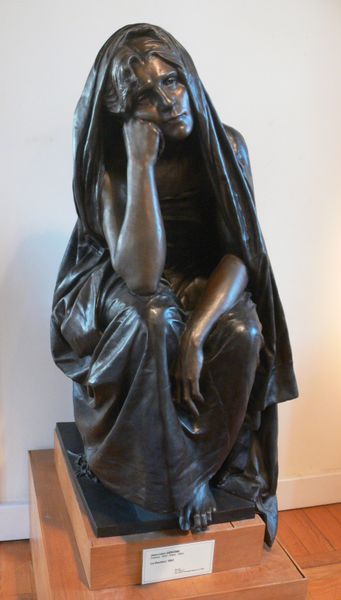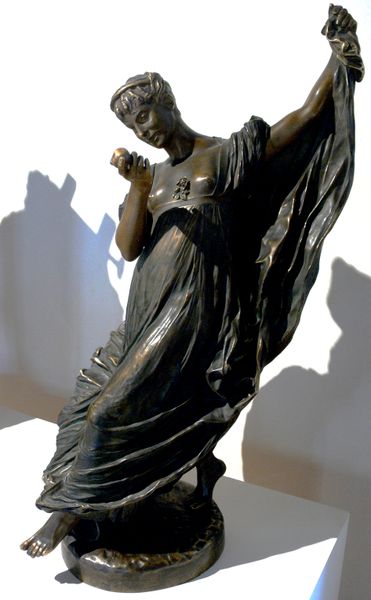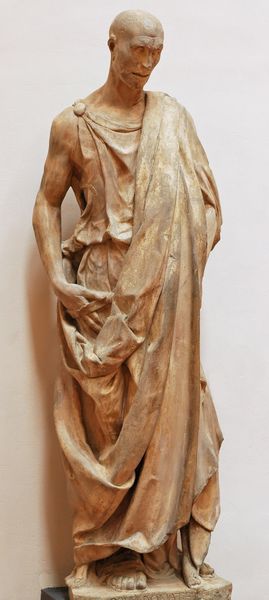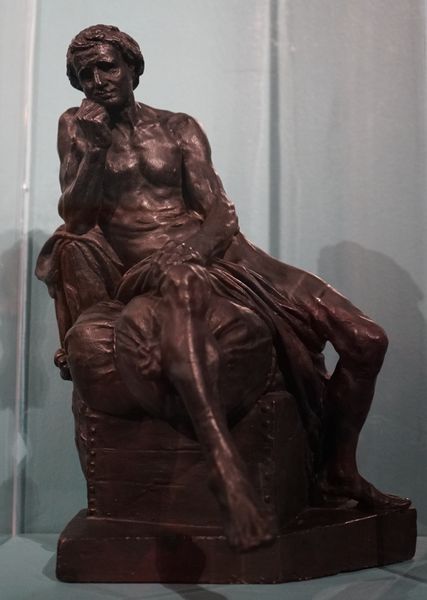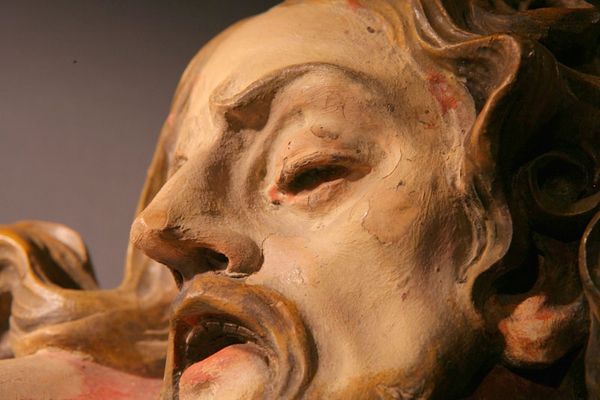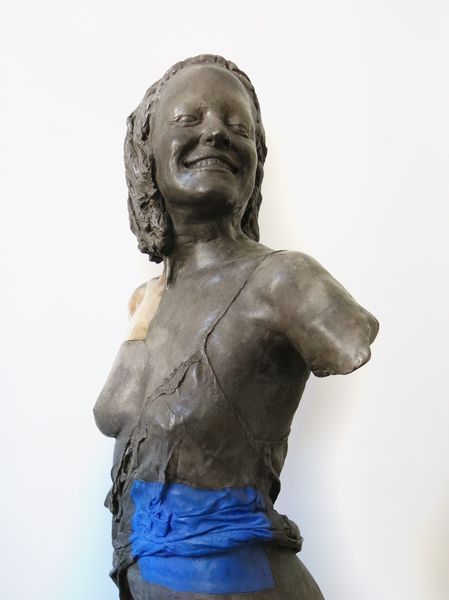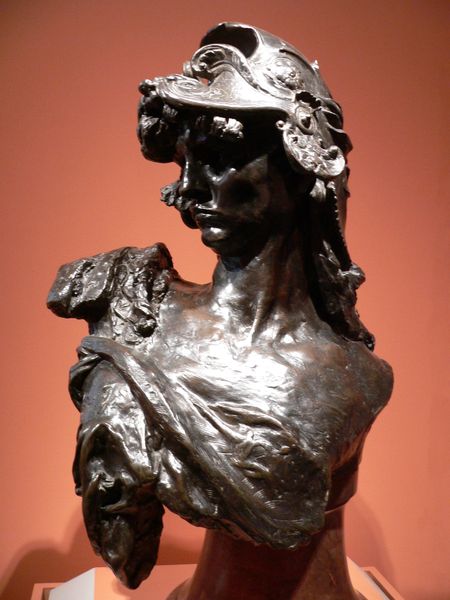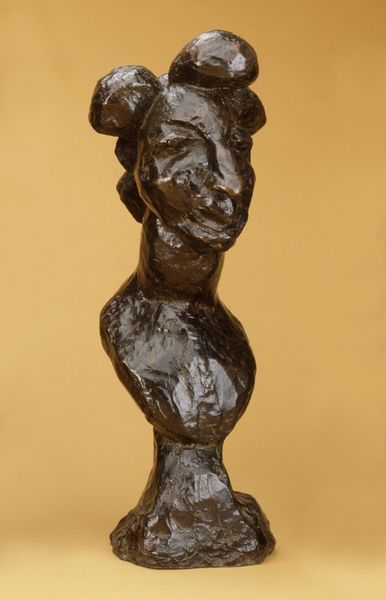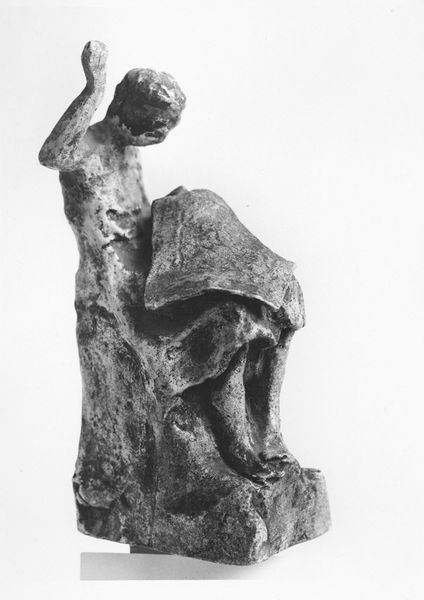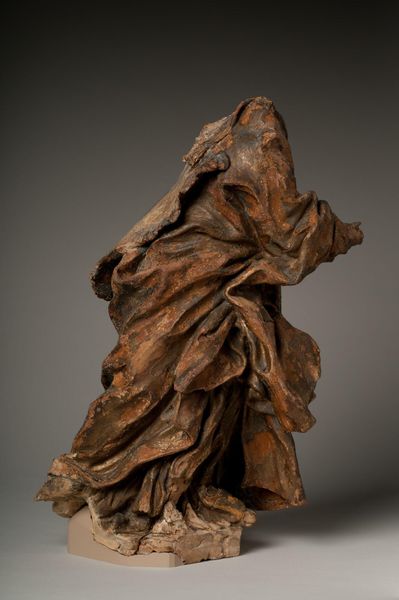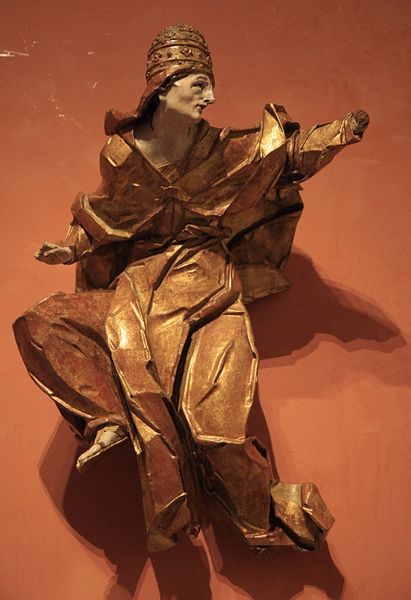
Copyright: Public domain
Curator: This compelling wood carving is entitled “Saint Anne (fragment),” crafted by Johann Georg Pinzel around 1761. It stands as a powerful example of Baroque sculpture. Editor: My first impression is one of deep sorrow, almost resignation. The weight of something profound seems to be pressing down on her, not just physically but emotionally. The lines etched into her face speak volumes. Curator: Pinzel's sculpture reflects the socio-political role of religious art during the Baroque period. Consider the influence of the Counter-Reformation on artistic expression at this time, where the depiction of intense emotion was used to evoke empathy and faith in the viewer. Saint Anne, often seen as a symbol of motherhood and faith, would have resonated deeply within the religious and patriarchal structures. Editor: Yes, and even as a fragment, it speaks so loudly. The roughly hewn texture of the wood and the expressive distortion, this anguish transcends the solely religious experience. It invites consideration of the expectations of women during this time and what it meant to live a pious life under immense patriarchal and societal burdens. We must not gloss over those realities that reflect on expectations of motherhood. Curator: Precisely. We can analyze Pinzel's technique and stylistic choices by investigating the political imagery, the patronage networks within religious institutions, and how public expectations informed this presentation. These sculptures weren’t just aesthetic objects but tools for conveying complex narratives that reinforced both religious dogma and social order. Editor: Her gaze is lowered, but still there’s a powerful connection. And the fragmentation itself–it raises a lot of contemporary questions about women’s wholeness and the gaze upon them, fragmented and idealized. This compels me to deconstruct patriarchal notions even embedded within religious representation. Curator: Viewing this work necessitates the contextual backdrop from the historical lens. Its effectiveness depended on the societal norms, religious indoctrination, and established authority of the Catholic Church, the key figure shaping Baroque art. Editor: This really allows for an intersectional dialogue through the use of art history and contemporary theory. Thank you for drawing attention to how art pieces function in tandem with philosophical perspectives. Curator: The pleasure is mine. I appreciate the insightful focus on modern readings as informed by the piece's origin and how context influences lasting perspectives.
Comments
No comments
Be the first to comment and join the conversation on the ultimate creative platform.
